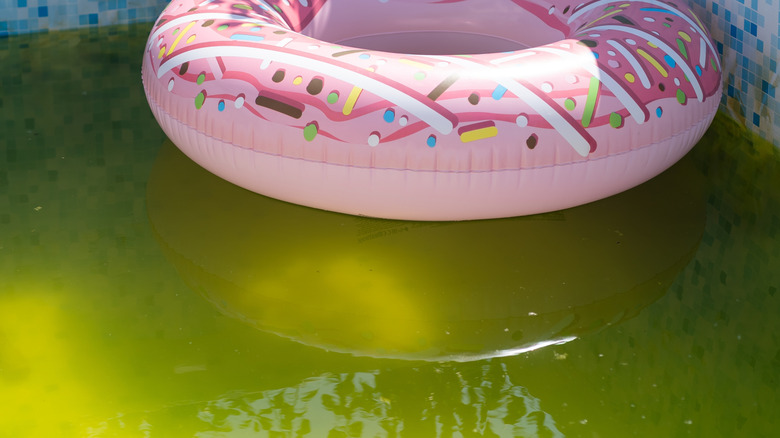The Benefits Of Installing A Stock Tank Pool In Your Yard
We may receive a commission on purchases made from links.
One of the biggest outdoor trends over the past couple of years has been stock tank pools. With endless inspiration on TikTok, Pinterest, and across the internet, it can be hard to find a reason not to install one. Ultimately there are pros and cons to any home or outdoor renovation project, but stock tank pools can be incredibly versatile, giving you a way to cool down in hot weather, relax in a hot tub, or make a DIY pond, giving your backyard a design upgrade with minimal maintenance. Plus, unlike a full-sized above-ground pool, a stock tank option takes up significantly less space as well as less water, so it's a great option if you aren't ready to commit to a larger option — or don't have the space to do so.
All in all, a stock tank pool can cost you anywhere from about $300 to $1,400 with the average being just under $1,000 for everything you need to DIY a stock tank pool which is pretty affordable overall. Yearly maintenance can range from under $100 to a couple hundred, but especially if you have a large family, that can cost a lot less than pool passes or several trips to the beach. The benefits can really ramp up.
Choosing the right stock tank for you
Stock tanks range generally between 6 to 10 feet in diameter, and are roughly 24 to 28 inches deep. If you want to opt for a hot tub or a small water-feature, a 6-foot option should be more than enough. If you want something that's big enough for you to relax and cool down in, go as big as possible — especially since the less water you have in the tank, the hotter it will get. Stock tanks also generally come in either metal or plastic, both of which can be lined or coated.
If you choose to chlorinate your water with a U.S. Pool Supply chlorine tablet dispenser, you may want to opt for plastic or at least line it, as it tends to erode through metal faster. If you want to use it in the winter, you can also turn it into a hot tub. If you go the hot tub route, the good news is that you can use either metal or plastic — though if you opt for plastic, it can be more effort to insulate.
Finally, you get to the fun part with the most benefit — deciding how to dress up your DIY stock tank pool. You can build it into a porch, on a concrete slab, or even install it into the ground. To get the full spa-like experience, you can also set the mood by adding some Luckystyle string lighting, or putting it under this Aoxun pergola. And if you do make it into a hot tub, don't forget a cover to keep it insulated and free of bugs and debris.
Like anything, stock tanks have some cons. Here's what to consider.
The most obvious downside is that while it is a pool, it isn't really a "swimming" pool. Since it is so small and more than anything so shallow, it is pretty limited to sitting, wading, and floating — though kids will obviously have a bit more leeway than adults do. Since they are so small, the water can get hot, and fast. You may want to make sure it is in a shaded spot, especially if you are going to be using a reflective metal tank, or you may end up feeling like you're in a giant bathtub.
If you want to keep your water swimmable and inviting, you can't just fill the pool with water and walk away. You will also need to have an Intex filtration system that keeps the water moving. If you neglect to do this, you can end up creating a breeding ground for mosquitoes and algae. At that point, you may as well have just made an oversized puddle. The final consideration is that some municipalities may require a permit to install your stock tank. Whether it is a neighborhood standard or an HOA code, getting stuck with a fine is a quick way to regret your decision. But if you follow the rules and invest in quality equipment, a stock tank pool can be a great way to keep cool for years to come.


